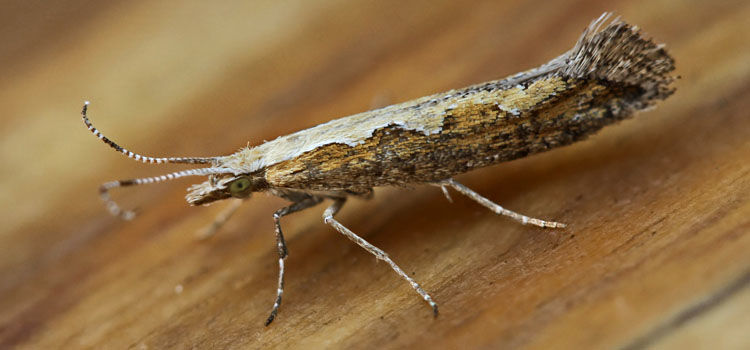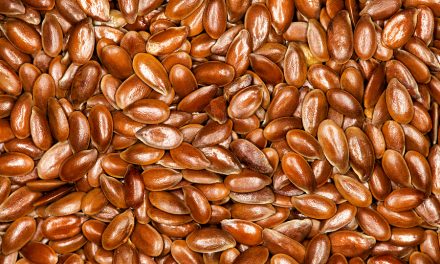In an attempt to reduce the population of diamondback moths Cornell University has applied for a permit to execute the world’s first open-air trial of a GM version of the insect. The moths will be engineered with a female lethality trait which will leave female larvae dead and allow males to reproduce until the population is destroyed.
Diamondback moths are particularly troublesome to the Brassica family of plants in the southern US, UK, parts of Europe, South and Southeast Asia, Australia, New Zealand and Africa (although not particularly in New York State).
Up to 100,000 males will be released from the lab on a weekly basis, for up to four months, in order to significantly affect the moth lifecycle. And, if researchers find there are not enough naturally existing non-GM moths, they will release some. But, the release of the GM-males has to be in numbers “an order of magnitude greater than wild moths” in order for the GM to overtake the wild ones. Right now the numbers are unknown but numbers from 4X to 50X have been used in trials of other GM insects.
RELATED ARTICLES:
- Houston Set to Become Next Battleground for GMO Mosquitoes to “Fight Zika Virus”
- 40 Different Studies that Confirm GMO Foods are Destroying Your Health
- Print this List! 400 Companies that Don’t put GMO Ingredients in their Food
We love the idea of reducing troublesome pests without the use of pesticides but absolutely zero assessments have been done to test for health and environmental safety. This test, should it be approved, is reckless and unsafe for the citizens and farms of New York State.
How you can help.
Because the USDA’s Animal and Plant Health Inspection Service is holding a public consultation on the proposal to release the GM insects, you can object to the proposal. Thanks to our friends at GM Watch for the instructions and information below:
Please submit your comments here BEFORE May 19, 2017:
https://www.regulations.gov/docket?D=APHIS-2014-0056
by clicking on the box, “Comment Now!”
For more information, see the complete USDA/APHIS permit
http://www.centerforfoodsafety.org/files/15-3410-cornell-university-enclosures_27927.pdf
The environmental assessment
https://www.regulations.gov/document?D=APHIS-2014-0056-0002
and GeneWatch UK’s briefing
http://www.genewatch.org/pub.shtml?als%5bcid%5d=576071
Points for your comments to the USDA/APHIS
Please use your own words insofar as is possible and make the objection your own by explaining how this GMO insect trial affects or concerns you, your family, and/or your community.
1. IMPACT ON HUMAN AND ENVIRONMENTAL HEALTH
* The human and animal health and environmental impacts of GDM on target and non-target species are unknown.
* In particular, the impacts on non-target species that might eat the GDM larvae are not known. These include:
– Farmworkers who may breathe or ingest large amounts of dead larvae debris or live adults
– Vegetable consumers who may eat dead GDM larvae remaining on the vegetable
– Other birds and animals that may eat the plant, larvae, or debris
– Non-target species in the soil that might eat or come in contact with dead GDM larvae that drop to the ground
* The use of a tetracycline antibiotic to breed the GDM could mean that antibiotic resistant bacteria can develop in their guts and spread into the environment and food chain.
2. IMPACT ON BRASSICA FARMING IN NEW YORK STATE
This trial could create a problem that doesn’t exist today, with negative consequences to the vital brassica farming business and farm economy in NYS.
* Diamondback moths are not a serious agronomic threat in New York, yet this trial could create a bigger problem. The permit allows that non-GM moths may be released if there aren’t enough naturally. GDM need to be repeatedly released at many times greater-than-natural numbers in order to overcome the wild population. Ratios of 10 to 1 and 40 to 1 GDM to wild moths have been used in caged experiments to date, taking repeated releases over six weeks to begin to suppress the wild moth population. The resulting damage to crops could be considerable.
* In real world use, large releases of GDM could make it economically and agronomically challenging to grow brassicas in NYS for both conventional and organic farmers.
* Farmers may need to use additional amounts of pesticide to protect the crop against the infestation. This could create a cycle of release/spray that will require ever greater releases and more spraying.
* Organic farms and methods of control could be overwhelmed in the face of the infestation created, making organic brassicas a thing of the past in NYS.
* If the release results in reductions in diamondback moth populations, other pests, including potentially more destructive ones, could move into the ecological niche created, resulting in serious ecological and agronomic problems.
* Since GDM female larvae die (presumably on the plant), farmers (conventional or organic) could experience large amounts of dead larvae on the plants, possibly resulting in market rejection of NY-grown brassicas and threatening export markets.
3. POTENTIAL FOR CONTAMINATION AND OTHER UNINTENDED CONSEQUENCES
There are no appropriate bio-security measures in place that can protect those who do not wish to expose themselves to GDM. Windblown moths can be dispersed hundreds/thousands of miles from where they emerge.
* When male GDM spread outside the trial site, breeding and release of large numbers could lead to a resistance to the female lethality trait. The GDM might encounter sufficient tetracycline in the environment to allow them to survive and breed.
* The developers have not investigated how the insects might mutate and evolve as releases continue.
* Organic and other farmers who do not wish to have GDM on their crops will not be protected from spread of GDM to their fields. No measures have been put in place to establish liability and responsibility for contamination by GDM.
With thanks to NOFA-NY (Northeast Organic Farming Association of New York) for their information sheets:
General fact sheet https://www.nofany.org/files/GDM_FACT_SHEET_v._1-10-16.pdf
Farmers’ fact sheet https://www.nofany.org/files/FARMERS_GDM_Info_SheetREVISED.pdf
Source: GM Watch












